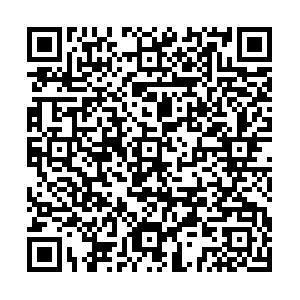An underground localization algorithm and topology optimization based on ultra-wideband
-
摘要: 地下定位面對環境惡劣、干擾、多徑等影響,常規算法難以獲得高精度的定位結果,同時井下環境多為狹長的巷道,不利于布置定位所需的錨節點,而井下錨節點的布置通常對定位結果有較大影響,因而使用普通的定位方法不足以滿足智能采礦所需的高精度定位需求.本文對傳統的三邊定位算法進行分析,總結了傳統三邊定位結果產生誤差的原因,并提出了改進的算法,通過仿真實驗驗證了改進算法的有效性.同時通過理論分析誤差帶,使用最大絕對定位誤差用于仿真分析拓撲結構對定位結果精度的影響,提出了對拓撲結構的優化原則,能夠根據環境特點以實現定位區域內平均最大絕對定位誤差最小為原則得出最優拓撲結構.文中設置了仿真實驗和實地實驗對改進的算法和拓撲結構優化方法進行了驗證,實驗結果中,改進的算法能夠在相同拓撲結構下減小15%~43%的誤差,而在相同算法下優化的拓撲結構能夠減小17%~65%,二者結合能夠減小誤差達74%.結果表明,在相同的定位條件下,改進的定位算法能夠明顯提高定位結果的精度,同時定位結果與拓撲結構之間也有著密切的聯系,根據實際環境靈活布置拓撲結構能夠使定位結果的精度進一步提高,將改進的算法與拓撲結構優化方法結合可以實現更高的定位精度.Abstract: Development of context-aware technologies and rapid advancement in communication are essential parts of most industries, such as underground mining, pervasive medical care, smart space, and wireless sensor network surveillance. On occasions that require positioning services, location techniques offer convenience and may even save lives. In underground mining, not only do the miners work in a hostile environment but the environment itself threatens their lives. Thus, determining the precise location of people and objects in underground environments is essential. However, GPS cannot be used for practical application underground and underground localization seems to be the most feasible way to provide positional information to mining vehicles. The localization of underground vehicles has been a critical obstacle in the development of intelligent mining vehicles. Faced with the bad environment, interference, and multipaths among other effects, it is difficult to obtain high-precision positioning results using conventional algorithms. In addition, the underground environment is mostly made up of long narrow tunnels, which is not conducive to an arrangement of anchor nodes, and the layout of underground anchor nodes usually has great influence on the positioning results. Therefore, ordinary positioning methods do not meet the high-precision positioning requirements of intelligent mining. In this paper, traditional trilateration was analyze, the reasons for error was summarized, and an improved algorithm was proposed. Simulation results showed the effectiveness of the improved algorithm. In addition, the principle of topology optimization was proposed by theoretically analyzing the error band and using the maximum absolute positioning error to simulate the influence of topology on positioning accuracy. According to the characteristics of the environment, minimizing the average maximum absolute positioning error was the principle of topology optimization. Here, simulation and field experiments were carried out to verify the improved algorithm and topology optimization method. The experimental results show that the improved algorithm can reduce the error by 15% -43% under the same topology, the optimized topology can reduce the error by 17% -65%, and a combination of the two can reduce the error by 74%. The results show that under the same localization conditions, the proposed algorithm can significantly improve the accuracy of the localization results. In addition, there is a close relationship between localization result and topology structure. Based on the actual environment, choosing a flexible topology layout can further improve positioning accuracy, and combining the improved algorithm with the topology optimization method can achieve a higher positioning accuracy.
-
參考文獻
[1] Takahara H, Ohno K, Itami M. A study on UWB radar assisted by inter-vehicle communication for safety applications//2012 IEEE International Conference on Vehicular Electronics and Safety. Istanbul, 2012:99 [2] Fall B, Elbahhar F, Heddebaut M, et al. Time-Reversal UWB positioning beacon for railway application//2012 International Conference on Indoor Positioning and Indoor Navigation (IPIN). Sydney, 2012 [3] Salman R, Willms I. A mobile security robot equipped with UWBradar for super-resolution indoor positioning and localisation applications//2012 International Conference on Indoor Positioning and Indoor Navigation (IPIN). Sydney, 2012 [4] Shang F, Champagne B, Psaromiligkos I. Joint estimation of time of arrival and channel power delay profile for pulse-based UWB systems//2012 IEEE International Conference on Communications (ICC). Ottawa, 2012:4515 [5] Chu Y C, Ganz A. A UWB-based 3D location system for indoor environments//2005 IEEE 2nd International Conference on Broadband Networks. Boston, 2005:224 [6] Bialer O, Raphaeli D, Weiss A J. Efficient time of arrival estimation algorithm achieving maximum likelihood performance in dense multipath. IEEE Trans Signal Process, 2012, 60(3):1241 [7] Ershadh M. Study of the design evolution of an antenna and its performance for UWB communications. Microw Opt Technol Lett, 2015, 57(1):80 [8] De Angelis A, Händel P, Rantakokko J. Measurement report:Laser Total Station Campaign in KTH R1 for Ubisense System Accuracy Evaluation, QC20120618. Stockholm:KTH Royal Institute of Technology, 2012 [9] Mahfouz M R, Fathy A E, Kuhn M J, et al. Recent trends and advances in UWB positioning//IEEE MTT-S International Microwave Workshop on Wireless Sensing, Local Positioning, and RFID (IMWS). Croatia, 2009 [10] Chehri A, Fortier P, Tardif P M. On the TOA estimation for UWB ranging in complex confined area//ISSSE'07. International Symposium on Signals, Systems and Electronics. Montreal, 2007:533 [15] Han G J, Choi D, Lim W. A novel reference node selection algorithm based on trilateration for indoor sensor networks//CIT 2007.7th IEEE International Conference on Computer and Information Technology. Aizu-Wakamatsu, 2007:1003 -

 點擊查看大圖
點擊查看大圖
計量
- 文章訪問數: 799
- HTML全文瀏覽量: 298
- PDF下載量: 24
- 被引次數: 0



 下載:
下載:
